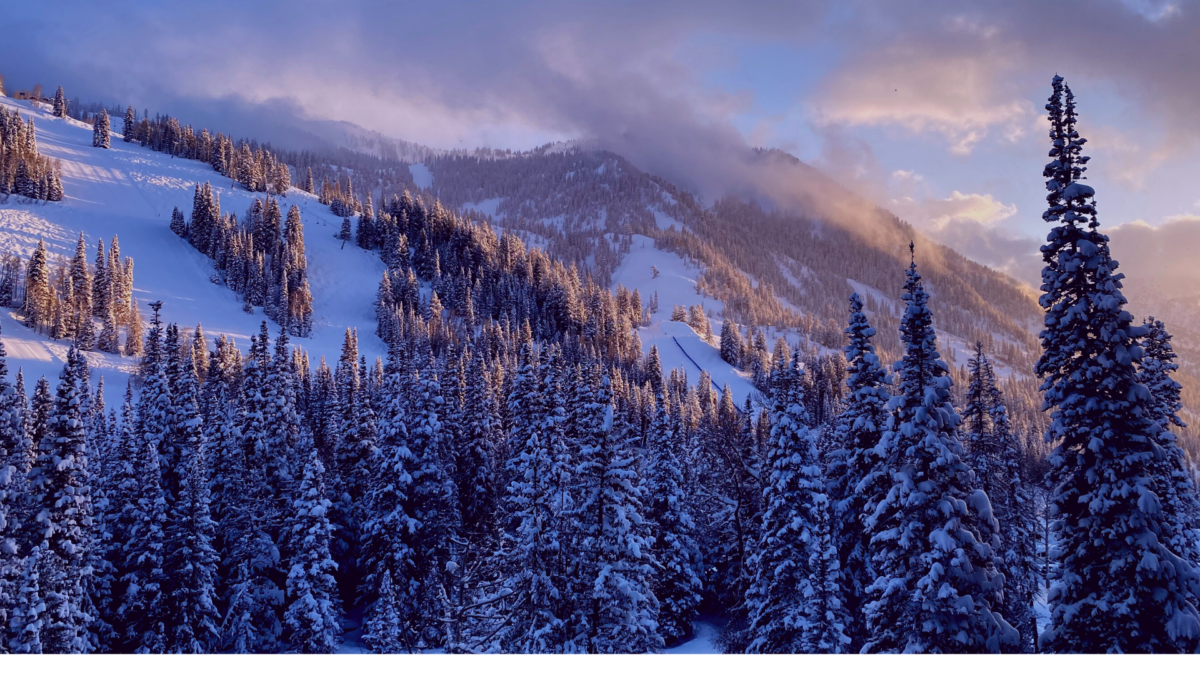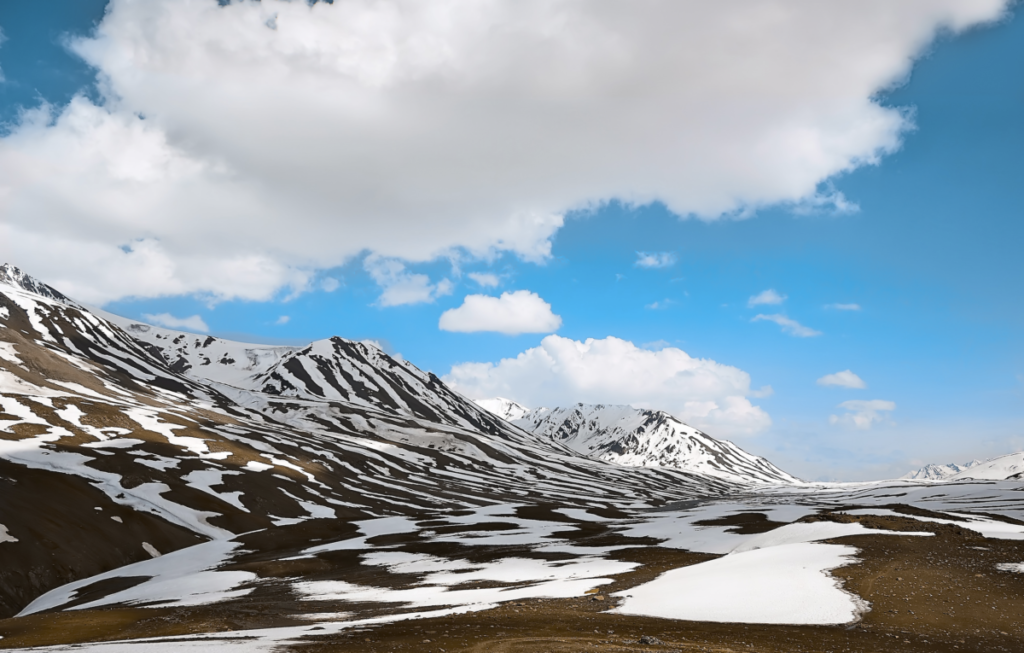
My eyes watered from the blinding sun that reflected off the snow, and I felt embraced by the warm feeling of its rays on my back, as I skied down the Dealer’s Choice run on Vail Mountain with caution. I starkly remember plowing through the slush and every so often being startled by the sound of gravel scraping against the bottom of my skis and thrown off balance by dry patches scattered throughout the run. Fast forward to the History of Skiing and Snow Sports class I decided to take the second semester of my first year at Emory, and I’ve learned the grave reality that my unpleasant skiing experience in Vail is gradually becoming the new norm due to climate change. The effects of climate change have manifested themselves through poor snow conditions, which have not only substantially diminished the thrill of the sport, as I personally experienced, but it has caused the ski industry to suffer considerably, as rising temperatures reduce snowfall, thus shortening the winter season and significantly decreasing the revenue of ski towns, like Vail, Colorado.
A comprehensive understanding of climate change is critical as we embark on our investigation of how the warming of the Earth’s atmosphere is affecting snowfall and the greater ski industry. According to the Global Warming Climate Change Report conducted by researchers at the Yale Project on Climate Change Communication in May 2014, climate change is defined as “the long-term change of the Earth’s climate including changes in temperature, precipitation and wind patterns over a period of several decades or longer.” Evidently, one atypical year of weather patterns is not representative of climate change, rather we are looking for a recurrent trend of irregularly high temperatures ranging over a span of numerous years.
The global climate system has been warming since the year 1900; however, the past 20 years have represented an intensified exhibition of this environmental issue, as displayed by “increased surface, atmospheric, and ocean temperatures; melting glaciers and ice sheets; rising sea levels; and increased atmospheric water vapor,” according to Jeff Lukas in his article “Climate Change in Colorado: Recent Trends, Future Projections and Impacts: An Update to the Executive Summary of the 2014 Report.” Snowfall is heavily codependent on temperature and precipitation, so as our climate warms, snowfall is being suppressed with it. Even slight alterations in temperature can dictate if snowpacks melt, as well as if precipitation descends as rain or snow. Heightened winter temperatures also impact the timing and nature of the amassed snow on the mountain, like “snow depth, snow cover duration (how long the snow stays on the ground), and snow density (how slushy snow is),” according to Burakowski and Hill in their article entitled, “Economic Contributions of Winter Sports in a Changing Climate.”
In an article entitled “Climate Change Indicators: Snow and Ice,” researchers from the United States Environmental Protection Agency reported evidence of declining snowfall in most areas of the country since 1930, the year extensive records emerged. An indicator was used to track total snowfall and “the percentage of precipitation that falls in the form of snow versus rain” at “419 weather stations in the contiguous 48 states” from 1930 to 2007. It was found that approximately 80 percent of the settings that they investigated have endured greater winter precipitation that descended as rain as opposed to snow, and as a result, 57 percent of stations showed a recurring decline in aggregate snowfall. The average change was determined to be a 0.19 percent decrease per year, thus displaying the incessant warming trend. Certainly, this evidence is not based on a sole substandard year in the mountains; rather, it represents a recurring pattern that has gotten significantly severe with time.
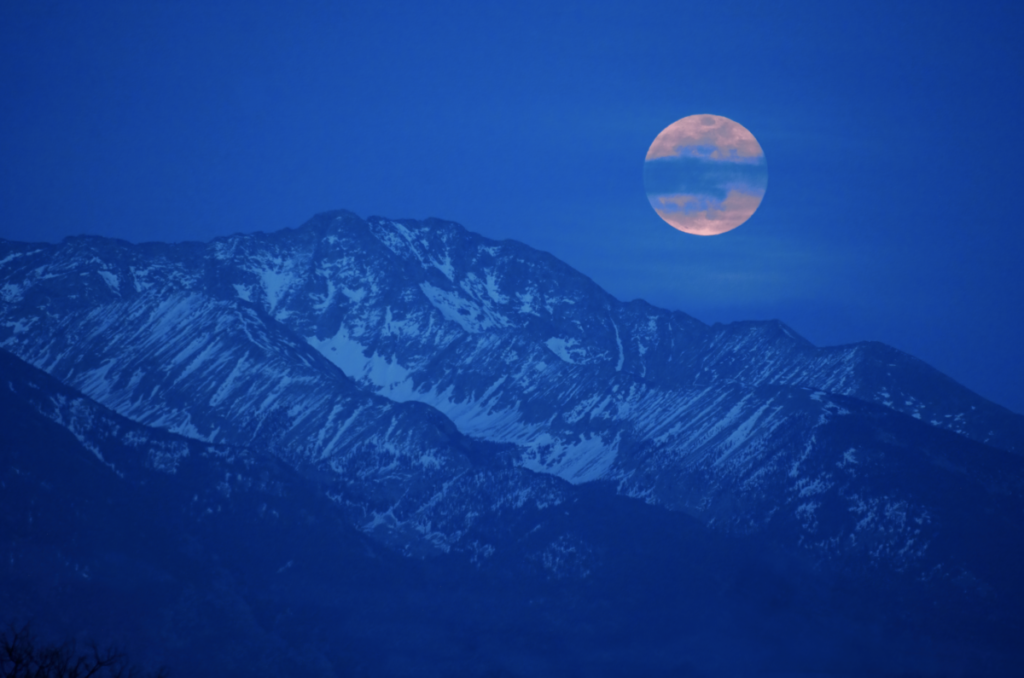
Observed climate trends in Colorado have been closely associated with these global changes. Jeff Lukas, a valued member of the Western Water Assessment research team, since joining in 2004, confirms this claim in his executive summary of the 2014 report entitled, “Climate Change in Colorado: Recent Trends, Future Projections and Impacts.” Looking back two decades, Colorado’s climate has noticeably increased in warmth. Lukas states that the “statewide warming in Colorado is plausibly linked to anthropogenic influences,” and that it is acceptable to link recent extreme precipitation events in Colorado to anthropogenic climate change, as well. Over the past 20 years, the yearly average temperatures throughout the state of Colorado have risen by approximately 2°F, and this pattern is observable according to statistics from the yearly deviation. Thus, snowpack, which was quantified by the snow-water equivalent (SWE) as of April 1, has been predominantly under the mean since 2000 throughout all of the river basins in Colorado, and it is credible to say that heightened temperatures during the winter and spring are engendering a general decline in snowpack, which is shortening the ski season.
Now that we have gathered scholarly evidence supporting the existence of climate change and its effect on snowfall, primarily in the past decades, across the United States and specifically in Colorado, you must be wondering: Well then how have the effects of climate change impacted the ski industry? First, it is crucial that we solely analyze how winter snow sports tourism has economically supported the U.S. economy and Colorado’s state-level economies, irrespective of climate change, so that we can later distinguish the monetary impact of climate change on what was once a thriving economy.
Tourist dollars are what drive and sustain the local economies of ski towns and the overall ski industry. According to a 2012 analysis by Protect Our Winters (POW) and the Natural Resources Defense Council, it was discovered that 23 million Americans engage in winter sports each year and that the winter snow sports tourism industry brought in $12.2 billion to the national economy, as people spent money on expenditures such as “hotels, resorts, restaurants, bars, grocery stores, sporting goods stores and gas stations,” which Burakowski and Hill state in their article entitled “The Economic Contributions of Winter Sports in a Changing Climate.” In terms of Colorado’s trends regarding this topic, POW’s 2018 report provided an approximation of the profit that skiing and snowmobiling have contributed to the economy for thirty states in 2016, and Colorado was the leading state in the nation in producing revenue from these sports by providing “more than 43,000 jobs and $2.56 billion in total economic value.” Evidently, ski resorts are a powerhouse that support the economy, which therefore places a great deal of importance on the ski conditions and snowfall, as they represent a driving force in attracting skiers.
Overall, there is a strong positive correlation relating skier visitation to snow cover and/or SWE, according to POW’s 2018 report. After much analysis, it was detected that during years with inflated snowfall, participation levels in snow sports ameliorated, which gave rise to more jobs and additional economic value, whereas in years with deflated snowfall, there was a considerable reduction in jobs and revenue. For instance, additional research from this POW 2018 report showed that between 2001 and 2016, consistent low snowfall caused the economy to lose 5.5 million skier visits, $1 billion in revenue, and 17,400 jobs in relation to an average season. Based off of this interdependence between snowfall and the economy, it is expected that climate change would only accentuate this relationship.
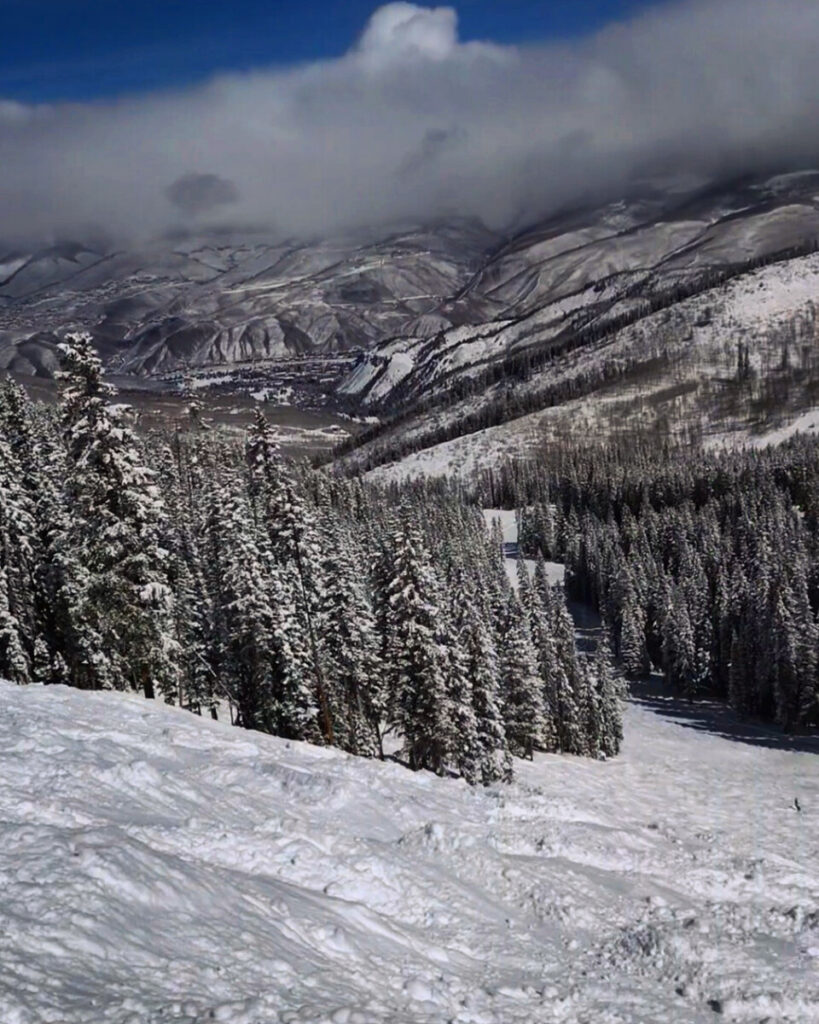
Fundamentally, snow is currency for ski towns, so as our snow is melting, money is evaporating with it. The ski industry is contingent on steady and predictable snowfall, but climate change has disrupted such a weather pattern, thus causing the ski industry to deteriorate with the shortening of the winter season. A tourist’s decision to embark on a ski vacation is swayed by several factors, such as travel costs, ticket prices, skiing budget, leisure time, and the amount of snow, which is the most weighty component of a successful ski experience that is worth an individual’s money. Climate change has the potential to influence consumer surplus linked to winter recreation, thus decreasing ski visits, as tourists would not be willing to pay standard prices for substandard ski conditions. It just wouldn’t be worth it.
Shockingly, tourism has declined within ski resorts even during the Christmas holiday, a time that is traditionally one of the busiest, most profitable seasons, as stated in a 2016 case study performed in Breckenridge, Colorado. Among those who have been distressed by the erosion of snowfall during the spring months are town officials, including Breckenridge Mayor, Eric Mamula, who shared his concern over this issue by stating, “My worry is about the edges of the season, not the middle,” as the ski season is beginning later and ending sooner. Frankly, this is not a new issue. Our warming climate has impacted the ski industry since 2001. A study conducted in 2012 by POW and the Natural Resources Defense Council examined the past decade and uncovered that between the years 2002 and 2012, the variations in the winter season induced by climate change caused a large expense for the ski industry of approximately $1.07 billion. This economic disaster has impacted ski resorts across the nation, especially in the state of Colorado.
Despite Vail’s high standing as the third-largest single-mountain ski resort in the U.S., it still has been unable to dodge the damaging ramifications of climate change in the slightest, and the resort’s future is gradually becoming dimmer. According to the article, “Seeking Snow: The Impact of Climate Change on Vail Resorts,” written by George Hanscom, a Harvard MBA alumni, the wellbeing of Colorado’s resorts and economy have been particularly put at stake as a result of its high altitude, which amplifies the ramifications of climate change and shortens the region’s winter. Hanscom cites a University of Maryland study whose results revealed that within the last decade, spring snowpack that had covered over one million square miles melted away throughout the U.S., which as a result, contracted the length of the typical ski season by numerous days and caused a deprivation of $1 billion of revenue among ski resorts, thus confirming the economic loss calculated by the POW 2018 report. Ultimately, with the gradual increase and prevalence of low snow years due to climate change, this trend is predicted to only worsen with time.
If Colorado has experienced four out of its six warmest years noted since 1895 in just a five year span between the years of 2012 and 2017, what will the future hold? Projections of Colorado’s future climate have been drawn using global climate models (GCMs), which conclusively have gestured toward a warmer future. Colorado’s climate is forecasted to continue to warm over the next several years. According to Jeff Lukas’s article, “Climate Change in Colorado: Recent Trends, Future Projections and Impacts,” almost all projections of Colorado’s spring snowpack (April 1 SWE) exhibit declines for the middle years of the 21st century as a result of projected warming. The majority of these foreseeable changes span from -5% to -20%, and these decreases are fueled by a portion of “cool-season precipitation,” which is descending as rain rather than snow, as well as “greater sublimation and snowmelt during the winter and early spring.” By 2050, the average yearly temperatures throughout the state are expected to increase by 2.5°F to 5°F. As revealed in this article, the future warming of our climate is predicted to “reduce Colorado’s spring snowpack” and “cause earlier snowmelt and runoff.”
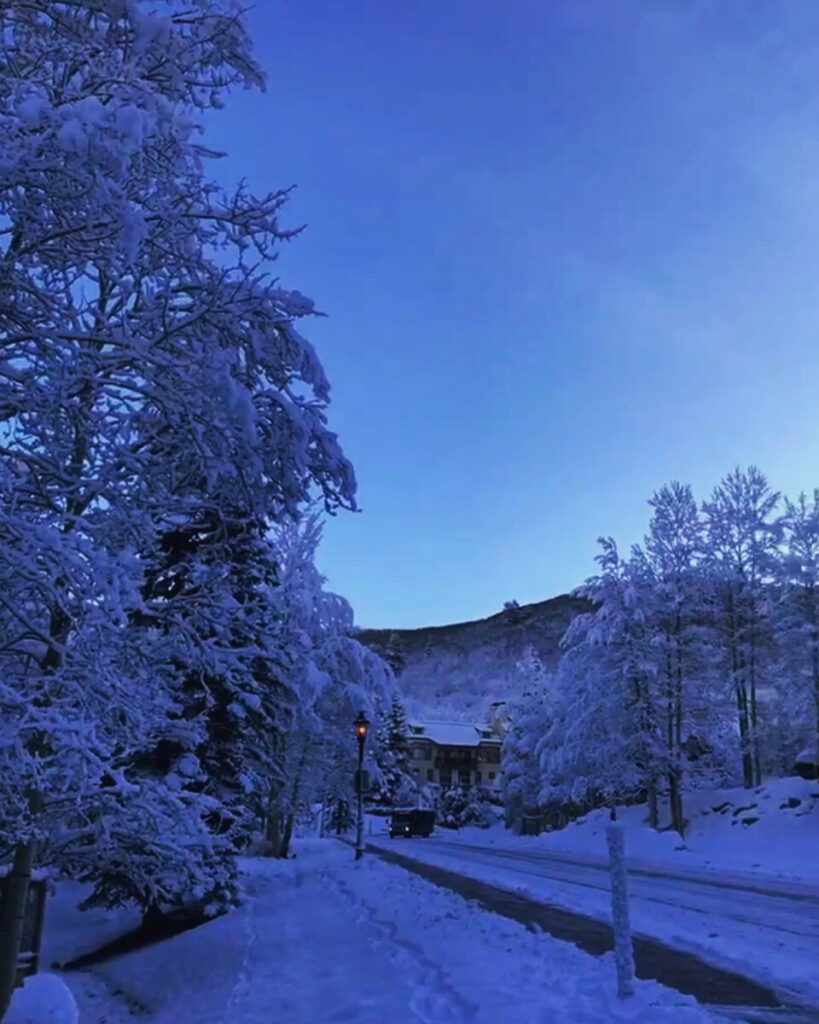
Projections of climate change were also calculated by scholars Lute, Abatzoglou, and Hegewisch from the University of Idaho in their article, “Projected Changes in Snowfall Extremes and Interannual Variability of Snowfall in the Western United States,” which was published in a peer-reviewed scientific journal entitled, “Water Resource Research.” As stated in the article, they used “20 global climate model projections downscaled to montane Snowpack Telemetry (SNOTEL) stations” to examine the changes in snowfall extremes and interannual variability of snowfall in the western United States. The study concluded that the diminishing snow days observed were noteworthy at every station and uncovered a “similar spatial pattern to changes in annual SFE,” or snowfall water equivalent; the slightest declines were 10-20% in the Middle and Southern Rockies and areas in Utah, while the greatest declines reached up to 50% in the Cascades and Arizona. Above all, the future of our ski experiences on the mountain and the ski industry is being suppressed by an environmental issue that is being overlooked by many. Essentially, Americans are turning a cold shoulder to the severity of climate change while our winters slowly fade away. As I personally experienced, the severity of this pressing issue has most effectively been brought to recognition when I physically experienced the wet sludge beneath my skis and attended a history of skiing class with enlightening guest speakers, but unfortunately, we cannot wait up for people to stumble upon this threatening problem on a vacation or in their college experience. We must spread awareness and actively educate our peers about the implications of climate change and become more respectful inhabitants of our Earth to reduce environmental crises, as with the loss of the sport of skiing, comes the death of a hobby and lifestyle for many, which would be lamentable for the rest of history.
Essentially, Americans are turning a cold shoulder to the severity of climate change while our winters slowly fade away. As I personally experienced, the severity of this pressing issue has most effectively been brought to recognition when I physically experienced the wet sludge beneath my skis and attended a history of skiing class with enlightening guest speakers, but unfortunately, we cannot wait up for people to stumble upon this threatening problem on a vacation or in their college experience. We must spread awareness and actively educate our peers about the implications of climate change and become more respectful inhabitants of our Earth to reduce environmental crises, as with the loss of the sport of skiing, comes the death of a hobby and lifestyle for many, which would be lamentable for the rest of history.
References:
Béki, Piroska. “Climate Change Effects on Ski Tourism.” Applied Studies in Agribusiness and Commerce 11, nos. 3-4 (December 31, 2017): 19-26. https://doi.org/10.19041/APSTRACT/2017/3-4/3.
Berger, Simon. Retreating Snow. Photograph. Flickr. June 27, 2011. Accessed May 11, 2021. https://www.flickr.com/photos/simonmatzinger/26043421177/in/photolist-FFnkM4-Tvh7WC-28SyvBq-YRNFEi-21WmNyL-ow3B5v-BXsYUC-23HNewB-S4oKax-2etmCST-ow7QKZ-xfLyaa-ow59j6-oeoJXW-BMCyGu-xwvym7-JegBv-oeWAww-wNNvAz-w9qF5F-eg8v9Z-otgfsJ-ocd8qV-oehC47-oeLDck-ow3ZYg-2hY4hNb-26ExVWK-2kSUMxM-2kTpLsc-oumQpn-xrLeHJ-xhT1ih-sGArLg-xJfoUe-xJhWjp-xeExua-x6R75v-xMLd6u-xmwg7f-xELJKR-21MrKsN-x6QS3x-xzvxJ9-wn2Xm7-xC2DSJ-A2TkX7-SSmVzR-2kUbjRZ-8T92L4.
Burakowski, Elizabeth, and Rebecca Hill. “Economic Contributions of Winter Sports in a Changing Climate.” University of New Hampshire Scholars’ Repository. Last modified February 23, 2018. Accessed May 11, 2021. https://scholars.unh.edu/cgi/viewcontent.cgi?article=1190&context=ersc.
“Climate Change Indicators: Snow and Ice.” United States Environmental Protection Agency. Last modified November 9, 2020. Accessed May 11, 2021. https://www.epa.gov/climate-indicators/snow-ice.
Duffy, Rosaleen, and Melanie Stroebel. “Protecting Holidays Forever: Climate Change and the Tourism Industry.” The Brown Journal of World Affairs 22, no. 1 (Fall/Winter 2015): 7-23. http://www.jstor.org/stable/24590997.
Foersterling, Jack. “Low Snow Years Cost Ski Towns $1 Billion.” Powder: The Skier’s Magazine. Last modified March 9, 2018. Accessed May 2, 2021. https://www.powder.com/stories/climate-change/new-study-finds-low-snow-years-cost-ski-industry-1-billion/.
Fox, Porter. DEEP: The Story of Skiing and The Future of Snow. N.p.: Rink House Productions, 2013.
Hanscom, George. “Seeking Snow: The Impact of Climate Change on Vail Resorts.” Technology and Operations Management: MBA Student Perspectives. Last modified November 4, 2016. Accessed May 11, 2021. https://digital.hbs.edu/platform-rctom/submission/seeking-snow-the-impact-of-climate-change-on-vail-resorts/.
Harvard MB Alumni. “Bare Slopes: The Profitability of Ski Resorts in a Warming World.” Technology and Operations Management: MBA Student Perspectives. Accessed May 2, 2021. https://digital.hbs.edu/platform-rctom/submission/bare-slopes-the-profitability-of-ski-resorts-in-a-warming-world/.
“How Climate Change Will Impact the Snowsports Industry.” Protect Our Winters. Accessed May 2, 2021. https://protectourwinters.org/how-climate-change-will-impact-the-snowsports-industry/.
Kille, Leighton Walter. “Research on what ‘global warming’ and ‘climate change’ mean, and when to use the terms.” The Journalist’s Resource. Last modified January 24, 2016. Accessed May 11, 2021. https://journalistsresource.org/environment/research-global-warming-meaning-use-terms/#:~:text=Global%20warming%20refers%20to%20the,Earth%27s%20climate%20including%20changes%20in.
L. B. Knowles, Natalie. “Can the North American Ski Industry Attain Climate Resiliency? A Modified Delphi Survey on Transformations towards Sustainable Tourism.” Journal of Sustainable Tourism 27, no. 3 (March 4, 2019): 380-97. https://doi.org/10.1080/09669582.2019.1585440.
Lukas, Jeff. “Climate Change in Colorado: Recent Trends, Future Projections and Impacts: An Update to the Executive Summary of the 2014 Report.” The Western Water Assessment. Last modified August 2018. Accessed May 11, 2021. https://wwa.colorado.edu/climate/co2014report/ExecSummary_Climate_Change_CO_Report_update_August2018.pdf.
Lute, A. C., J. T. Abatzoglou, and K. C. Hegewisch. “Projected Changes in Snowfall Extremes and Interannual Variability of Snowfall in the Western United States.” Water Resources Research 51, no. 2 (February 2015): 960-72. Accessed May 11, 2021. https://doi.org/10.1002/2014WR016267.
McCusker, Kelly, and Hannah Hess. “America’s Shrinking Ski Season.” Climate Impact Lab. Last modified February 8, 2018. Accessed May 11, 2021. http://www.impactlab.org/news-insights/americas-shrinking-ski-season/.
Myers, Patrick. Moon over Little Bear Peak. Photograph. Flickr. April 26, 2021. Accessed May 11, 2021. https://www.flickr.com/photos/greatsanddunesnpp/51146418242/.
Norgaard, Kari Marie. Living in Denial: Climate Change, Emotions, and Everyday Life. N.p.: MIT Press, 2011.
Scott, Daniel, and Geoff McBoyle. “Climate Change Adaptation in the Ski Industry.” Mitigation and Adaptation Strategies for Global Change 12, no. 8 (December 2, 2006): 1411-31. https://doi.org/10.1007/s11027-006-9071-4.
Scott, Daniel, Robert Steiger, Michelle Rutty, Marc Pons, and Peter Johnson. “Climate Change and Ski Tourism Sustainability: An Integrated Model of the Adaptive Dynamics between Ski Area Operations and Skier Demand.” Sustainability 12, no. 24 (December 18, 2020): 1-16. https://doi.org/10.3390/su122410617.
Scott, Michon. “Climate and Skiing.” Climate.gov. Last modified November 19, 2018. Accessed May 2, 2021. https://www.climate.gov/news-features/climate-and/climate-skiing.
Steiger, Robert, Daniel Scott, Bruno Abegg, Marc Pons, and Carlo Aall. “A Critical Review of Climate Change Risk for Ski Tourism.” Current Issues in Tourism 22, no. 11 (December 8, 2017): 1343-79. https://doi.org/10.1080/13683500.2017.1410110.
Yale Project on Climate Change Communication, and George Mason University Center for Climate Change Communication. “What’s in a Name? Global Warming vs Climate Change.” Yale Program on Climate Change Communication. Last modified May 27, 2014. Accessed May 11, 2021. https://climatecommunication.yale.edu/publications/whats-in-a-name-global-warming-vs-climate-change/.
